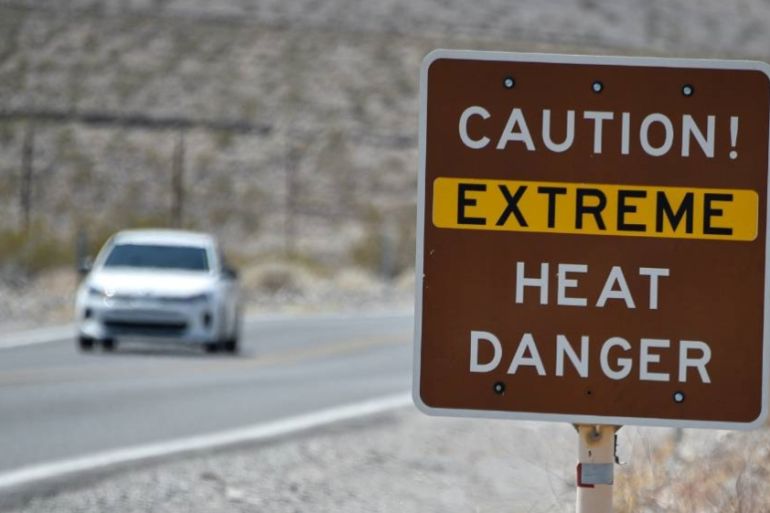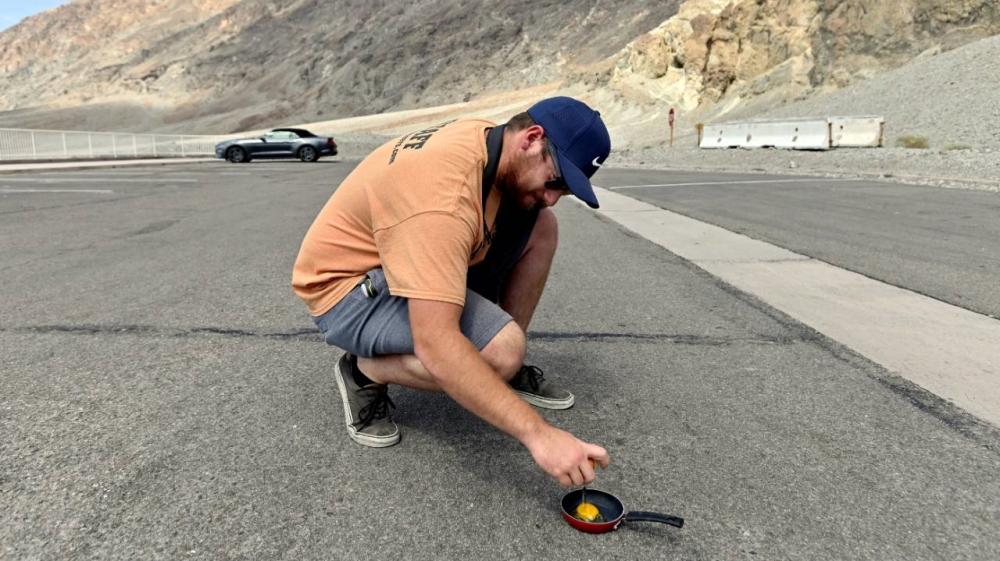‘Insanely hot’: Death Valley records world temperature record
Temperature at Furnace Creek weather station – in Mojave Desert – soared as high as 54.4C (130F).

One of the hottest air temperatures recorded anywhere on the planet in at least a century, and possibly ever, was reached at Death Valley in California’s Mojave Desert where it soared to 54.4 Celsius (130 Fahrenheit).
An automated observation system run by the US National Weather Service in the valley’s sparsely populated Furnace Creek reported the record at 3:41pm (22:41 GMT) on Sunday at the crest of an extreme heatwave, a more frequent occurrence due to climate change.
Keep reading
list of 4 itemsThousands evacuate as wildfire grows ‘dramatically’ in western Canada
Photos: Flash floods in Afghanistan devastate lives and livelihoods
Floods kill 50 people in northern Afghanistan’s Baghlan province
It was a dry heat: Humidity fell to 7 percent. But it felt “insanely hot” all the same, according to meteorologist Daniel Berc at the weather service’s Las Vegas bureau. A heatwave roasting much of the western United States would continue all week, he said on Monday.
“It’s literally like being in an oven,” he said in a telephone interview. “Today is another day we could take another run at 130F.”
Tourists on Monday took selfies by an outdoor, unofficial thermometer at the Death Valley visitor centre while avoiding touching metal surfaces with bare skin.
|
|
Those who live and work in Furnace Creek, which had a population of 24 in the 2010 census, saw cause for concern in the record.
“We are seeing more records being broken at a daily and monthly level,” said Brandi Stewart, a public information officer for Death Valley National Park who can see the Furnace Creek weather station from her window. “It is significant that we’re seeing more records breaking.”
Effects of climate change
A temperature of 134F (56.7C) was recorded in Death Valley in July 1913, and Kebili, Tunisia, is said to have hit 131F in July 1931, according to the World Meteorological Organization.
But recent research by Christopher Burt, an extreme weather expert, has led some meteorologists to view these older records as the results of observer error.
Climate change has pushed global temperatures to new highs. In Europe, northern Spain broke local heat records in July, while wheat fields in France caught fire.
Forests across Siberian Russia are seeing unprecedented wildfires, while the Arctic sea ice shrank to a record low for July due to melting.

Summer heat is so routinely extreme that tourists are warned to drink at least four litres (one gallon) of water each day, carry additional water in their cars, stay close to their vehicles and watch themselves and others for dizziness, nausea and other symptoms of potentially deadly heat illness.
In Furnace Creek, staff and guests at The Oasis hotel were being urged to wear hats and sip water relentlessly while outside, according to general manager John Kukreja.
He tells guests that extreme heat does strange, deceptive things to the body.
“You’re going to sweat, and the sweat’s going to dry instantly, and you’re never going to know you actually felt hot,” he said. “Your hair stands on end. It’s almost like you feel like you’re cold, like goosebumps.”
The extreme heat has also ignited fires in the region.
On Saturday, a fire tornado formed during a bushfire near Chilcoot, California, worsened by the western heatwave.
The fire was “burning so incredibly intense, so there is just so much heat going into it” that air rose in a swirl just like what happens in some thunderstorms, said Dawn Johnson, senior meteorologist at the National Weather Service office in Reno, Nevada.
“It almost looks like a bomb went off.”